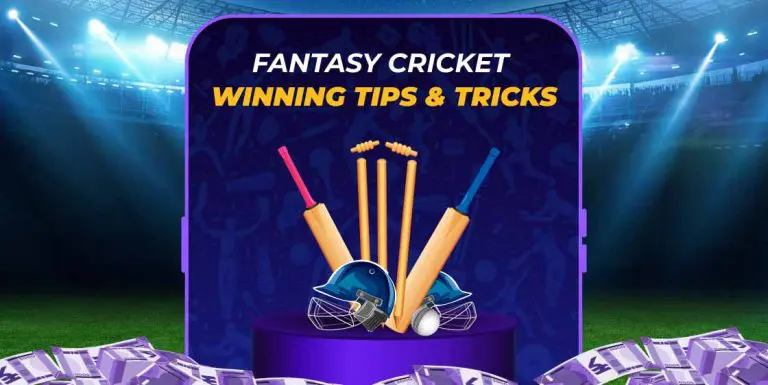Fantasy cricket has taken the world by storm, allowing fans to test their knowledge and skills by creating their own fantasy team and competing for prizes. While it seems simple—pick the best players and score the most points—there are plenty of myths that can lead even seasoned players astray.
When it comes to big tournaments like the World Cup, Champions Trophy, or IPL, understanding what truly works is the key to winning. Let’s bust some common myths and reveal strategies that can help you dominate your fantasy cricket contests.
Myth 1: Always Pick Star Players
Reality: Form and Match Conditions Matter More
Many fantasy players assume that big names like Virat Kohli, Babar Azam, or Jos Buttler will always perform. While these players have great track records, cricket is unpredictable.
What to do instead?
- Focus on current form rather than reputation. A lesser-known player in great form can often outscore a star struggling for runs.
- Check pitch and weather conditions before finalizing your team. A flat track may favor batters, while overcast conditions might help bowlers.
Example: In the 2017 Champions Trophy final, Fakhar Zaman (a relatively new player) outperformed big stars with a match-winning century.
Myth 2: More All-Rounders, More Points
Reality: Pick All-Rounders Wisely
It’s tempting to fill your fantasy team with all-rounders, thinking they’ll earn points with both bat and ball. However, not all all-rounders are equally effective.
What to do instead?
- Select all-rounders who play key roles in both innings. If a player is only a part-time bowler or bats lower down, their fantasy impact may be limited.
- Prioritize all-rounders who bat in the top 5 and bowl at least 4 overs (in ODIs and T20s).
Example: Ben Stokes is a great fantasy pick because he bats in the middle order and bowls crucial overs. On the other hand, Hardik Pandya’s fantasy value drops if he isn’t bowling his full quota.
Myth 3: Always Pick Top-Order Batsmen
Reality: Middle-Order Players Can Be Game-Changers
Yes, top-order batters face more balls and can score big, but in high-pressure tournaments, middle-order players often decide matches.
What to do instead?
- If the pitch is tough to bat on, middle-order batters who can anchor the innings are valuable.
- In a run-chase, finishers like Glenn Maxwell or David Miller can earn big fantasy points in fewer deliveries.
- Some teams rely heavily on their middle order—analyzing team dynamics can give you an edge.
Example: In the 2019 World Cup, MS Dhoni and Ravindra Jadeja’s partnership against New Zealand was more impactful than the contributions of some top-order batters.
Myth 4: Spinners Are Only Effective on Turning Pitches
Reality: Wrist Spinners Can Succeed on Any Surface
Many players avoid picking spinners in places like England, where conditions favor pace. However, wrist spinners can be effective even on non-turning pitches.
What to do instead?
- Leg-spinners like Rashid Khan and Yuzvendra Chahal can take wickets on any surface because they generate turn with their wrist action.
- Finger spinners (off-spinners and left-arm spinners) are generally more effective on slow pitches.
- Look at teams that struggle against spin and pick spinners accordingly.
Example: Adam Zampa’s success in Australian conditions proves that good spinners can be valuable in any location.
Myth 5: Captains and Vice-Captains Should Always Be the Best Players
Reality: Role and Match Situations Matter More
In fantasy cricket, choosing the right captain (2x points) and vice-captain (1.5x points) can make or break your game. Many players simply pick their favorite superstars, but a smarter approach is needed.
What to do instead?
- Pick players who can influence multiple aspects of the game—all-rounders, wicketkeepers, or bowlers who bowl in powerplays and death overs.
- Consider match-ups. If a batter struggles against left-arm pace and is facing Trent Boult, he might not be a great captain choice.
- Look at past records. Some players perform better in specific stadiums or against certain teams.
Example: In a tournament like the IPL, selecting Andre Russell or Moeen Ali as captain can be smart because they contribute in both innings.
Myth 6: More Players from One Team Means More Points
Reality: Balance Is Key
Many fantasy players stack their teams with players from a single dominant team, thinking they’ll score more points. However, this is risky—if that team underperforms, your entire fantasy score suffers.
What to do instead?
- Select players from both teams to balance risks.
- Focus on players who are in good form rather than just picking all from a strong team.
- If you’re confident in a team’s victory, stack key performers rather than just any player from that team.
Example: In the 2023 World Cup, South Africa’s strong batting lineup collapsed against the Netherlands, proving that relying too much on one team is a mistake.
Final Tips for Fantasy Cricket Success
Busting these myths will give you a clear edge in fantasy cricket, especially in high-stakes tournaments. The key is to focus on current form, match conditions, and smart player selection rather than outdated strategies.
So, the next time you create your fantasy team, remember: cricket is unpredictable, but a well-researched strategy can put you ahead of the competition!

